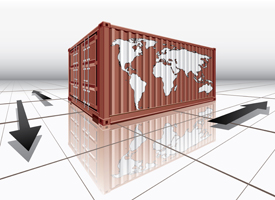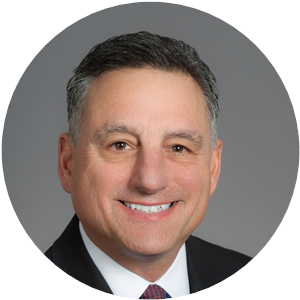There are potential pending shifts of the logistics and supply chain market in the next two years. How do the shifts impact how a real estate decision is developed including site selection? What are the new metrics besides rent per square foot or occupancy cost per square foot? What new value can an SIOR industrial broker bring to clients?
Pending Shift
The pending shift is driven by the completion of a third canal for the Panama Canal to accommodate larger ships that currently cannot make it through the canal due to size. Ships have become longer, wider and deeper in order to carry more containers from Shanghai to your shelf.
Wal-Mart ships over 700,000 containers per year while Walgreens might only ship 15-20,000 containers per year. Older ships hold 5,000 containers so multiple trips from Shanghai to your U.S. shelf is expensive. Ships are longer and wider and there lies the problem for the east coast. Long Beach is situated right on the Pacific Ocean. The area has wide turning radius for ships, harbor depth for the bigger ships and no real bridges that ships have to squeak under. The Long Beach port states that it handles 40 percent of the U.S. imports.
The Panama Canal realized that it was losing business. The Canal decided a few years ago that it had to build a third canal to accommodate larger ships. This third canal is under construction and is planned to be completed by 2015.
This is great news for the east coast if shipping decisions are made to skirt Long Beach and dock somewhere along the east coast. But the east coast ports are as old as the Panama Canal and do not have the depth or bridge clearance to accommodate the larger ships. East Coast ports are spending billions of dollars to dredge harbors and raise bridges with taxpayer’s money. Will the business shift from the West Coast to the East Coast?
The real answer does not lie with the shipping company. People who market their properties or ports to the shipping companies are missing the mark. The customers of the shipping companies that pay for the container deliveries is the key to understanding if any shift will occur. In theory, the industrial market along the east coast (not just ports but inland locations that are 200 miles away from a port) could be robust. It is this anticipation of a renaissance that many distribution developers are planning sites before the Canal and ports are prepared.
The end-user is researching site selection based on its customer base location. For instance, if you are selling 45 percent of your products in the northeast U.S. then why dock in Miami? The key to understanding site selection has now gone beyond the importance of a building’s rental rate or overall cost. Reliability and timeliness to the market has become a more critical issue for end-users. If a site allows an end-user to deliver goods to its customer base quicker than any other site, then it may be more valuable. In the popular program that has been running with SIOR Chapters this year (From Shanghai to Your Shelf), the new real estate modeling has been heavily discussed. Three new models shared by corporate end-users has been exposed to SIOR brokers to site selections that are solely beyond real estate costs. New and different metrics are being incorporated in a real estate decision including turn ratios per trip and 16 other metrics.
In conclusion, for the SIOR broker, the added value that he/she can bring is the following:
- Identify areas near ports or main rail
- Have contacts with rail service
- Have knowledge about logistical hubs and infrastructure
- Know about external hubs
- Support “Intellectual Property”
- Become certified or involved in the new field of “Logistics property brokerage business”






